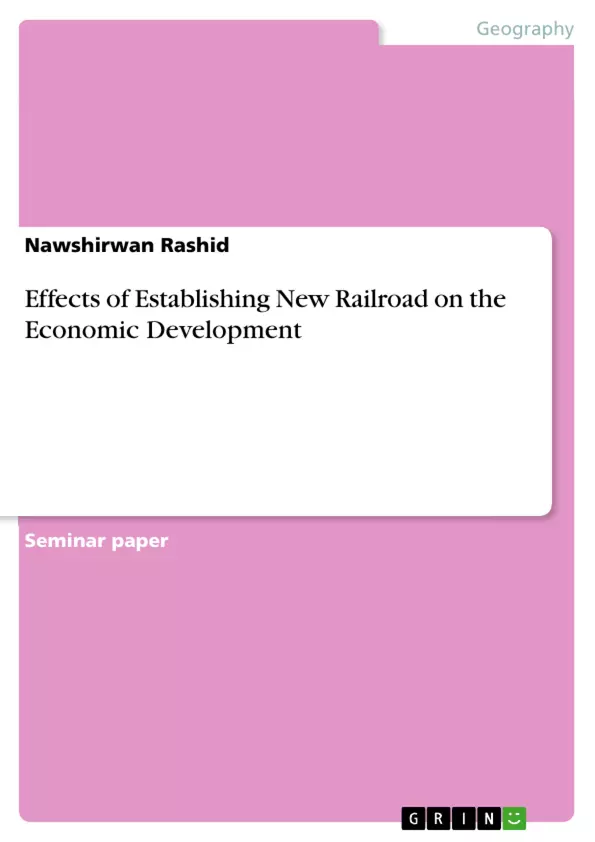Today in the economic environment of each country there are some important factors which make the economy on the growth road, among these factors is the infrastructure and mobility (internally and externally), in the period of industrialization the mobility of resources, raw materials and freights was expensive because of the limitation of mobility access; the primary aim of discovering new ways and systems to an easy and cheap mobility was earning more and more benefits.
Establishing new ways to transport easy and cheap was the discovering the rail ways to move passengers and freights among the cities first and the countries after, this new way of transporting made a huge distributing of the economic growth in those pioneer countries, which distributed changing public policies of more and more countries toward establishing the new transport manner, deciding to establish a new railways systems distributed to bring more investments and benefits to the investors and the productivity and growing GDP per capita of those countries.
Inhaltsverzeichnis (Table of Contents)
- Abstract
- Introduction
- Introduction of New Rail Systems in Developed Regions
- USA Case
- China Case: Railroad Expansion in Developing Countries
- Railroad and Economic Impact in Regions Initially without Railroad Systems
- The Nigeria Case: Railway and Agricultural Growth
- Conclusion
- References
Zielsetzung und Themenschwerpunkte (Objectives and Key Themes)
This paper aims to investigate the influence of railroad construction on economic development, using case studies from both developed and developing countries. It examines the impact of introducing new railroad technology in developed countries and analyzes the effects of railroad systems on the economic growth of developing countries that initially lacked such infrastructure.
- The relationship between railroad construction and economic development
- The impact of high-speed rail (HSR) technology on developed economies
- The role of railroads in promoting economic growth in developing countries
- The influence of external factors on economic development
- The economic impact of railroad infrastructure on different sectors, such as agriculture and industry
Zusammenfassung der Kapitel (Chapter Summaries)
The introduction discusses the historical significance of railroads as a driving force for economic development and addresses the ongoing debate about the causal relationship between transportation advancements and economic growth. It highlights the need to consider external economic variables and emphasizes the importance of analyzing specific case studies to understand the impact of railroads on different contexts.
The section on the introduction of new rail systems in developed regions focuses on the USA and China. It explores the advantages and disadvantages of high-speed rail systems and analyzes their impact on economic growth in these countries. The analysis considers factors such as customer benefits, congestion reduction, labor market changes, and the location decisions of corporations.
The chapter on railroad and economic impact in regions initially without railroad systems examines the case of Nigeria. It investigates the role of railroads in promoting agricultural growth and overall economic development in a country that previously lacked rail infrastructure.
Schlüsselwörter (Keywords)
Railroad construction, economic development, high-speed rail, transportation infrastructure, economic growth, developing countries, developed countries, agricultural growth, industrial development, case studies, external factors, impact analysis.
- Quote paper
- Nawshirwan Rashid (Author), 2015, Effects of Establishing New Railroad on the Economic Development, Munich, GRIN Verlag, https://www.grin.com/document/302550



